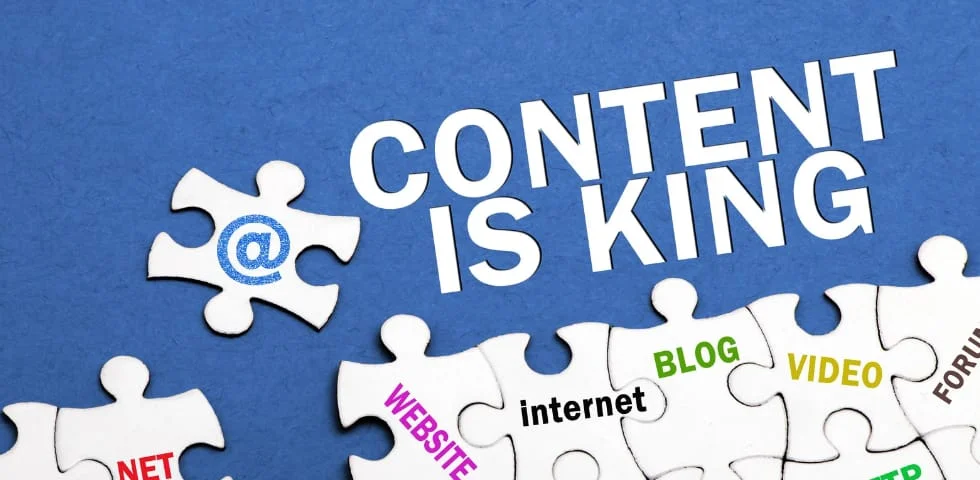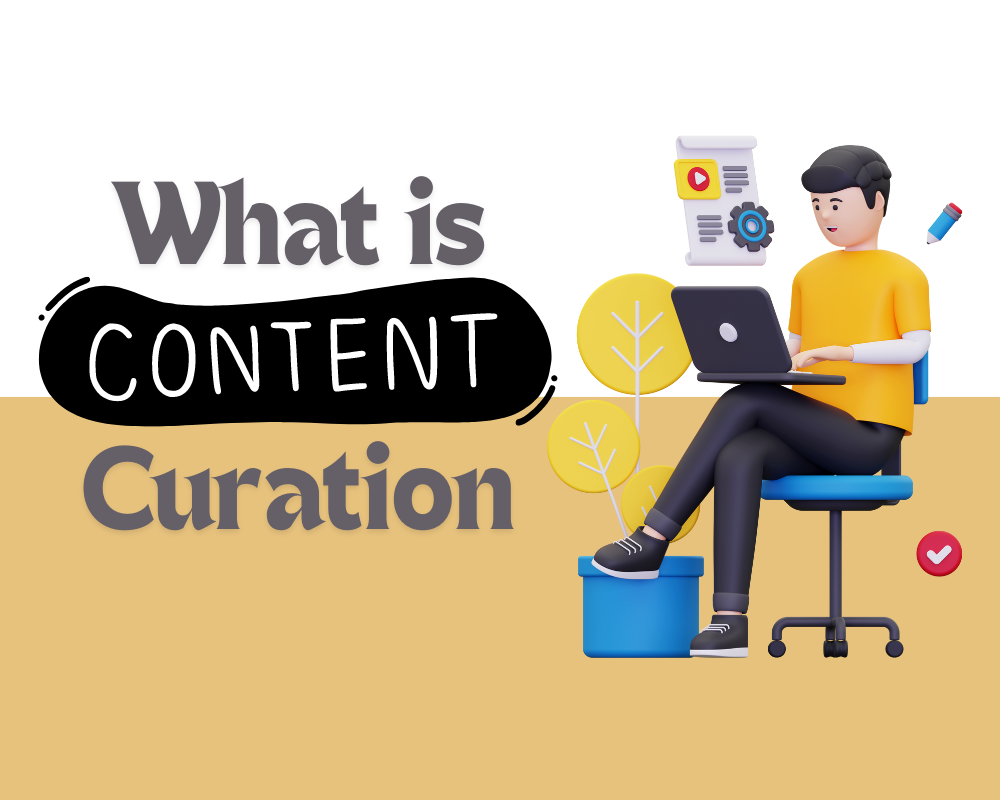In the ever-evolving landscape of digital marketing, one strategy has consistently proven its worth: content marketing. As businesses strive to connect with their audiences in more meaningful ways, creating, sharing, and promoting high-quality content has become the cornerstone of successful marketing campaigns. But what exactly is content marketing, and why is it so crucial?
Content marketing is the art of using valuable, relevant content to attract and engage a clearly defined target audience. Unlike traditional advertising, which often interrupts the consumer’s experience, content marketing seeks to provide genuine value, building trust and loyalty over time. This approach not only helps to establish your brand as a thought leader in your industry but also drives organic traffic, boosts engagement, and ultimately, increases conversions.
Creating content that resonates with your audience requires a deep understanding of their needs, preferences, and pain points. It involves a strategic blend of creativity and analytical thinking, ensuring that every piece of content serves a specific purpose. Whether you’re crafting a compelling blog post, designing an eye-catching infographic, or producing an engaging video, the goal remains the same: to provide value and foster a connection with your audience.
Once the content is created, the next step is to share it across various platforms. This could include your website, social media channels, email newsletters, and more. Effective content sharing ensures that your message reaches a broader audience, amplifying its impact and driving more traffic to your site. But sharing alone isn’t enough; promoting your content through paid advertising, SEO, and influencer partnerships can further enhance its visibility and reach.
In this comprehensive guide, we’ll delve into the intricacies of content marketing, exploring the best practices for creating, sharing, and promoting content. From understanding your target audience to leveraging the latest tools and technologies, we’ll provide you with actionable insights and practical tips to elevate your content marketing strategy. Whether you’re a seasoned marketer or just starting, this guide will equip you with the knowledge and skills needed to attract and engage your audience effectively.
Creating Content
Creating compelling content is the foundation of a successful content marketing strategy. Here’s how you can master this crucial step:

1. Understanding Your Target Audience:
- Conduct Audience Research: Utilize tools like Google Analytics, social media insights, and surveys to gather data about your audience’s demographics, interests, and online behavior. Understanding who your audience is and what they care about is the first step in creating content that resonates.
- Create Audience Personas: Develop detailed personas that represent your ideal customers. Include information such as age, gender, job title, challenges, and goals. These personas will guide your content creation process, ensuring that your content addresses the specific needs and interests of your audience.
2. Developing a Content Strategy:
- Set Clear Goals: Define what you want to achieve with your content marketing efforts. Whether it’s increasing website traffic, generating leads, or boosting engagement, having clear goals will help you measure the success of your strategy.
- Identify Key Topics: Based on your audience research, identify the key topics that your audience is interested in. Use tools like BuzzSumo and Google Trends to discover popular topics and trends in your industry.
- Content Planning: Create an editorial calendar to plan and organize your content. This will help you maintain a consistent posting schedule and ensure that you cover a diverse range of topics.
3. Types of Content:
- Blog Posts: Write informative and engaging blog posts that provide value to your audience. Focus on solving problems, answering questions, and sharing industry insights.
- Videos: Produce high-quality videos that capture your audience’s attention. Video content is highly engaging and can be used to demonstrate products, share tutorials, or tell stories.
- Infographics: Create visually appealing infographics that present complex information in an easy-to-understand format. Infographics are highly shareable and can help increase your content’s reach.
- Ebooks and Whitepapers: Develop in-depth ebooks and whitepapers that provide detailed information on specific topics. These long-form content pieces can be used as lead magnets to capture email addresses.
4. Tools and Resources for Content Creation:
- Content Creation Tools: Utilize tools like Canva for designing graphics, Adobe Premiere Pro for video editing, and Grammarly for proofreading your content.
- SEO Tools: Use SEO tools like Ahrefs, SEMrush, and Yoast SEO to optimize your content for search engines. These tools can help you identify relevant keywords, analyze your competitors, and improve your on-page SEO.
- Collaboration Tools: Leverage collaboration tools like Trello, Asana, and Slack to streamline your content creation process and ensure effective communication within your team.
By understanding your audience, developing a solid content strategy, and utilizing the right tools and resources, you can create content that not only attracts but also engages your target audience. The next step is to share this content effectively to maximize its reach and impact.
Sharing Content
Once you have created high-quality content, the next crucial step is to share it effectively. Sharing content involves selecting the right platforms, timing your posts for maximum reach, and leveraging various strategies to amplify your message. Here’s how to master the art of content sharing:

1. Choosing the Right Platforms:
- Social Media: Share your content on platforms where your audience is most active. This could include Facebook, Twitter, LinkedIn, Instagram, and Pinterest. Tailor your posts to fit the style and preferences of each platform.
- Email Newsletters: Utilize your email list to share new content with your subscribers. Email marketing remains one of the most effective ways to engage with your audience directly.
- Blog and Website: Regularly update your blog and website with new content. This not only keeps your site fresh but also improves SEO, making it easier for potential customers to find you.
2. Best Practices for Content Sharing:
- Craft Engaging Headlines: Your headline is the first thing your audience will see, so make it compelling. Use powerful words, ask questions, or create curiosity to encourage clicks.
- Visual Appeal: Use images, videos, and infographics to make your content more attractive. Visual content tends to get more engagement on social media.
- Call to Action: Always include a clear call to action in your posts. Whether it’s asking your audience to read more, share the content, or leave a comment, guide them on what to do next.
3. Timing and Frequency of Sharing:
- Optimal Times: Research and identify the best times to post on each platform. For example, LinkedIn posts may perform better during business hours, while Instagram posts might get more engagement in the evenings.
- Consistent Posting: Maintain a consistent posting schedule to keep your audience engaged. Use tools like Buffer or Hootsuite to schedule posts in advance and ensure regular updates.
4. Utilizing User-Generated Content:
- Encourage Sharing: Ask your audience to share their experiences with your products or services. User-generated content (UGC) can boost credibility and create a sense of community.
- Feature UGC: Highlight user-generated content on your social media channels and website. This not only acknowledges your audience but also provides authentic content that resonates with potential customers.
Effective content sharing can significantly increase the reach and impact of your content, ensuring that it gets in front of the right people at the right time. The next step is to promote your content to further enhance its visibility and engagement.
Promoting Content
Promotion is an essential component of content marketing that ensures your content reaches its maximum potential. While sharing is about distribution, promoting is about amplifying your content’s reach and visibility through various strategic efforts. Here’s how to promote your content effectively:

1. Organic vs. Paid Promotion:
Organic Promotion:
- SEO Optimization: Ensure your content is optimized for search engines. Use relevant keywords, meta descriptions, and alt tags. Aim for high-quality backlinks to boost your content’s search engine ranking.
- Social Media Engagement: Actively engage with your audience on social media. Respond to comments, join relevant groups, and participate in discussions to increase your content’s organic reach.
Paid Promotion:
- Social Media Ads: Use paid ads on platforms like Facebook, Instagram, LinkedIn, and Twitter to target specific demographics and increase your content’s visibility.
- Google Ads: Invest in Google Ads to promote your content to users who are actively searching for related topics. This can drive highly targeted traffic to your content.
2. Leveraging SEO for Better Visibility:
- Keyword Research: Conduct thorough keyword research to identify high-traffic, low-competition keywords. Incorporate these keywords naturally into your content.
- On-Page SEO: Optimize your content’s title, headers, and body text with relevant keywords. Use internal linking to connect your content and improve navigation.
- Off-Page SEO: Build high-quality backlinks from reputable websites. Guest blogging, influencer outreach, and content partnerships can help generate these valuable links.
3. Collaborations and Influencer Partnerships:
- Influencer Marketing: Partner with influencers in your industry to promote your content. Influencers can amplify your reach and lend credibility to your content.
- Guest Posting: Write guest posts for reputable blogs and websites. This can help you reach new audiences and establish authority in your industry.
- Content Partnerships: Collaborate with other brands or content creators to co-create and cross-promote content. This can expand your reach and introduce your content to new audiences.
4. Analyzing and Optimizing Content Performance:
- Performance Metrics: Track key performance metrics such as page views, engagement rates, conversion rates, and social shares. Use tools like Google Analytics, SEMrush, and social media analytics to gather data.
- A/B Testing: Conduct A/B tests on different elements of your content (headlines, images, calls to action) to determine what works best. Use the results to optimize future content.
- Continuous Improvement: Regularly review your content performance and make data-driven adjustments. Update and repurpose high-performing content to maintain its relevance and extend its lifespan.
Promoting your content effectively can significantly boost its visibility and impact, driving more traffic and engagement. The final step in mastering content marketing is to focus on engaging your audience and building a community around your content.
Engaging Your Audience
Engaging your audience is a crucial aspect of content marketing. While creating and promoting content are essential, fostering a connection with your audience ensures long-term loyalty and continuous interaction. Here’s how you can effectively engage your audience:

1. Interactive Content:
- Quizzes and Polls: Incorporate quizzes and polls in your content to encourage audience participation. These interactive elements are not only engaging but also provide valuable insights into your audience’s preferences.
- Live Videos and Webinars: Host live videos and webinars to interact with your audience in real-time. This format allows for direct engagement, Q&A sessions, and immediate feedback.
- Contests and Giveaways: Organize contests and giveaways to incentivize audience participation. Encourage users to share your content, tag friends, and engage with your brand for a chance to win prizes.
2. Building a Community Around Your Content:
- Social Media Groups: Create and nurture social media groups related to your industry or niche. These groups provide a platform for your audience to discuss topics, share ideas, and engage with your content.
- Forums and Discussion Boards: Establish forums and discussion boards on your website where users can interact with each other and your brand. This fosters a sense of community and belonging.
- Engage with Comments: Actively respond to comments on your blog posts, social media channels, and other platforms. Acknowledging your audience’s input shows that you value their opinions and encourages further interaction.
3. Encouraging Feedback and Interaction:
- Surveys and Feedback Forms: Regularly solicit feedback from your audience through surveys and feedback forms. This not only provides valuable insights but also shows that you are committed to improving based on their input.
- User-Generated Content: Encourage your audience to create and share content related to your brand. User-generated content (UGC) can include reviews, testimonials, photos, and videos. Feature UGC on your website and social media channels to build trust and authenticity.
- Personalized Interactions: Use personalized messages and interactions to connect with your audience on a deeper level. Address them by name, reference their previous interactions, and tailor your responses to their specific needs.
4. Measuring Engagement Metrics:
- Engagement Rate: Track the engagement rate of your content, including likes, shares, comments, and mentions. High engagement rates indicate that your content resonates with your audience.
- Time on Page: Monitor how long users spend on your content. Longer time on page suggests that your content is engaging and valuable.
- Repeat Visitors: Measure the number of repeat visitors to your site. A high number of repeat visitors indicates strong audience loyalty and ongoing engagement.
Engaging your audience is an ongoing process that requires continuous effort and adaptation. By incorporating interactive elements, building a community, encouraging feedback, and measuring engagement metrics, you can foster a deeper connection with your audience and ensure long-term success.
Case Studies and Examples

Learning from real-life examples can provide valuable insights and inspiration for your own content marketing efforts. In this section, we’ll explore a few successful content marketing campaigns and the lessons you can draw from them.
1. HubSpot: Inbound Marketing Campaign
Overview: HubSpot, a leader in inbound marketing, has built its brand around providing valuable content to attract and engage its audience. Their strategy includes a mix of blog posts, eBooks, webinars, and social media content.
Key Strategies:
- Educational Content: HubSpot focuses on creating educational content that addresses the pain points and challenges of their target audience. This includes comprehensive guides, how-to articles, and industry insights.
- Content Diversification: They produce a wide variety of content types, from in-depth blog posts to engaging videos and interactive tools. This diversification keeps their audience engaged and caters to different preferences.
- Lead Magnets: HubSpot uses high-value content like ebooks and whitepapers as lead magnets. These resources are offered in exchange for contact information, helping to grow their email list and generate leads.
Results: HubSpot’s content marketing strategy has positioned them as thought leaders in the marketing industry, significantly increasing their website traffic, engagement, and lead generation.
Lessons Learned:
- Create educational content that provides real value to your audience.
- Diversify your content types to keep your audience engaged.
- Use high-value content as lead magnets to grow your email list and generate leads.
2. Red Bull: Content as a Lifestyle
Overview: Red Bull has redefined content marketing by focusing on lifestyle and extreme sports content rather than directly promoting their energy drinks. Their content includes videos, events, magazines, and social media posts centered around adventure, sports, and high-energy activities.
Key Strategies:
- Lifestyle Branding: Red Bull’s content reflects the adventurous, energetic lifestyle associated with their brand. They create content that resonates with their audience’s interests and aspirations.
- High-Quality Video Content: Red Bull invests heavily in producing high-quality video content, including documentaries, sports event coverage, and extreme sports footage. Their YouTube channel is a prime example of engaging visual content.
- Event Sponsorship and Creation: Red Bull sponsors and creates major events like the Red Bull Air Race and Red Bull Stratos. These events generate significant media coverage and content that Red Bull can share across its channels.
Results: Red Bull’s content marketing strategy has built a strong brand identity, driving massive engagement and brand loyalty. Their YouTube channel alone has millions of subscribers and views.
Lessons Learned:
- Align your content with the lifestyle and interests of your target audience.
- Invest in high-quality, visually engaging content.
- Create and sponsor events that generate content and media coverage.
3. Dollar Shave Club: Viral Video Campaign
Overview: Dollar Shave Club, a subscription-based razor delivery service, made a big splash with a viral video campaign that humorously introduced their brand and product. The video, titled “Our Blades Are F***ing Great,” quickly gained millions of views and catapulted the company to fame.
Key Strategies:
- Humor and Relatability: The video used humor to make the brand relatable and memorable. It addressed common frustrations with buying razors and presented Dollar Shave Club as a convenient solution.
- Clear Value Proposition: The video clearly communicated the brand’s value proposition – affordable, high-quality razors delivered to your door – in an engaging and straightforward manner.
- Viral Potential: The content was crafted to be highly shareable, with witty dialogue and memorable moments that encouraged viewers to share it with their networks.
Results: The viral video campaign was a massive success, generating millions of views and significantly boosting subscriptions. It established Dollar Shave Club as a disruptor in the shaving industry.
Lessons Learned:
- Use humor to make your content more engaging and shareable.
- Clearly communicate your value proposition in an engaging way.
- Create content with viral potential by focusing on relatability and chargeability.
Practical Tips and Actionable Advice
To help you implement these strategies, here are some practical tips and actionable advice for your content marketing efforts:

1. Creating a Content Calendar:
- Plan Ahead: Develop a content calendar to plan your content in advance. This ensures consistency and helps you stay organized.
- Diversify Content Types: Include a mix of content types such as blog posts, videos, infographics, and social media posts to keep your audience engaged.
- Set Deadlines: Establish clear deadlines for content creation, review, and publication to maintain a regular posting schedule.
2. Tools for Managing and Promoting Content:
- Content Management Tools: Use tools like Trello, Asana, or CoSchedule to manage your content creation process and collaborate with your team.
- SEO Tools: Leverage SEO tools like Ahrefs, SEMrush, and Moz to optimize your content for search engines and track your performance.
- Social Media Tools: Use social media management tools like Buffer, Hootsuite, or Sprout Social to schedule posts, monitor engagement, and analyze performance.
3. Staying Updated with Content Marketing Trends:
- Industry Blogs and Newsletters: Subscribe to industry blogs and newsletters to stay informed about the latest content marketing trends and best practices.
- Webinars and Conferences: Attend webinars, workshops, and conferences to learn from industry experts and network with other professionals.
- Continuous Learning: Invest in continuous learning through online courses, certifications, and reading industry publications.
By implementing these practical tips and leveraging the lessons learned from successful content marketing campaigns, you can elevate your content strategy and achieve better results.
Conclusion
Mastering content marketing is essential for any business looking to attract and engage their target audience in today’s digital landscape. By understanding your audience, developing a robust content strategy, and leveraging the right tools and techniques, you can create content that not only draws in readers but also fosters long-term engagement and loyalty. Sharing and promoting your content effectively amplifies its reach, while engaging your audience ensures they remain invested in your brand.
From learning how to create high-quality, relevant content to understanding the nuances of sharing and promoting it, the strategies outlined in this guide will help you build a successful content marketing campaign. By studying real-life case studies and implementing practical tips, you can continually improve your content marketing efforts and stay ahead of the curve.
Remember, content marketing is an ongoing process that requires continuous effort, creativity, and adaptation. Stay updated with industry trends, measure your performance, and be willing to evolve your strategy to meet the changing needs of your audience. With dedication and the right approach, you can master content marketing and achieve your business goals.
Frequently Asked Questions (FAQ)
What is content marketing and why is it important?
Content marketing is the practice of creating, sharing, and promoting valuable, relevant content to attract and engage a target audience. It is important because it helps build trust with your audience, drives organic traffic, and increases conversions by providing real value.
How do I start with content marketing?
To start with content marketing, begin by understanding your target audience and their needs. Develop a content strategy that aligns with your business goals, create high-quality content, share it across appropriate platforms, and promote it to maximize reach.
What types of content should I create?
The types of content you should create depend on your audience and goals. Common types include blog posts, videos, infographics, ebooks, whitepapers, and social media posts. Diversifying your content types can help keep your audience engaged.
How can I measure the success of my content marketing efforts?
Measure the success of your content marketing efforts by tracking key performance metrics such as website traffic, engagement rates, conversion rates, and social shares. Tools like Google Analytics, SEMrush, and social media analytics can provide valuable insights.
How often should I update my content marketing strategy?
Regularly review and update your content marketing strategy to ensure it remains effective. This could be quarterly, bi-annually, or annually, depending on your business and industry dynamics. Stay informed about the latest trends and adjust your strategy accordingly.
How do I stay updated with content marketing trends?
Stay updated with content marketing trends by subscribing to industry blogs and newsletters, attending webinars and conferences, and investing in continuous learning through online courses and certifications.
What are some common mistakes to avoid in content marketing?
Common mistakes to avoid in content marketing include creating content without a clear strategy, neglecting audience research, focusing solely on promotion without providing value, and failing to measure and analyze performance. Ensure your content is relevant, valuable, and aligned with your audience’s needs.














